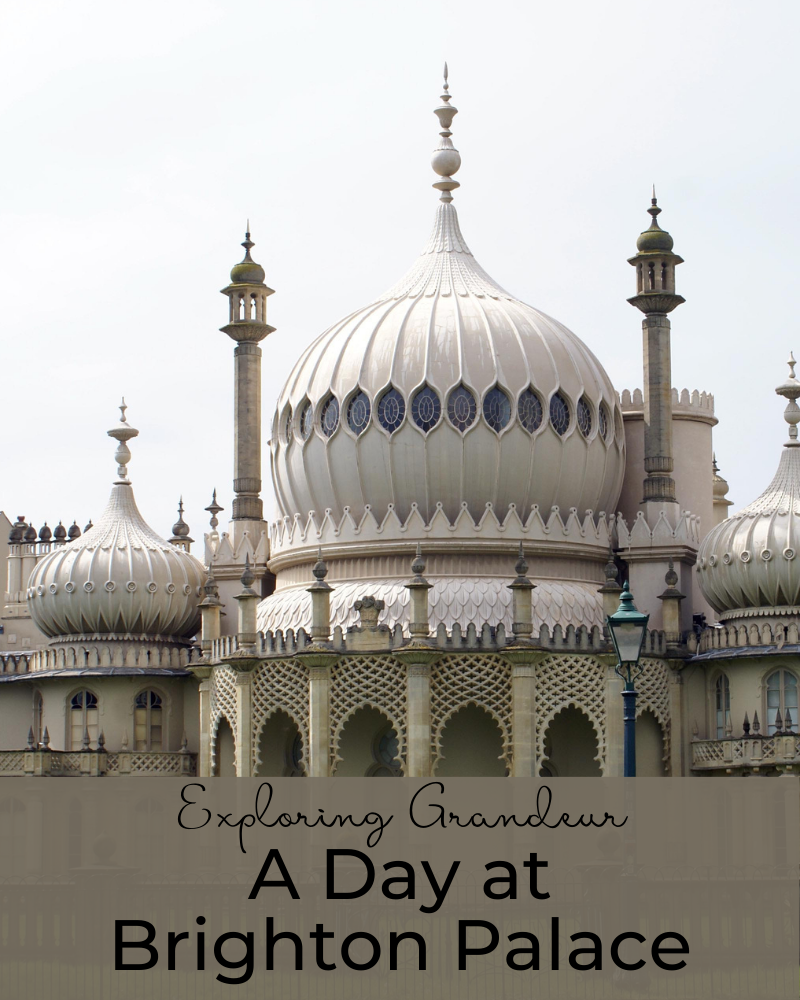The palace's exterior is a blend of Indo-Saracenic and Chinese architectural influences, making it an architectural marvel that's hard to miss. The domes, adorned with colorful tiles and intricate designs, glisten under the sun's rays, creating a mesmerizing visual spectacle. The intricate details on the walls, the play of light and shadow, and the exquisite craftsmanship throughout the palace are a testament to the dedication of the artisans who brought King George IV's vision to life.
|
A Glimpse into History
Brighton Palace, also known as the Royal Pavilion, serves as a vivid reflection of the flamboyant tastes of King George IV. Originally built as a modest villa in the late 18th century, the palace underwent a series of expansions and renovations to transform into the dazzling structure it is today. The king's fascination with Indian and Chinese architectural styles is evident in the palace's unique design, characterized by intricate domes, minarets, and ornate interiors. As you step through its opulent doors, you're instantly transported to a world of opulence and grandeur. The history of Brighton Palace, also known as the Royal Pavilion, is a fascinating tale of transformation, lavish indulgence, and cultural fusion. Built during a time of shifting societal values and changing architectural tastes, the palace's history reflects the extravagance and artistic experimentation of the Regency era. |
However, as George IV's infatuation with Brighton grew, so did his ambitions for the palace. He enlisted the services of architect John Nash to oversee a series of expansions and renovations that would transform the villa into the extravagant palace we see today. Inspired by his fascination with Indian and Chinese aesthetics, the king instructed Nash to incorporate these exotic styles into the design, resulting in the palace's distinctive Indo-Saracenic and Chinese architectural elements.
The architectural transformation was not without controversy. George IV's extravagant spending on the palace, along with his extravagant lifestyle, drew both praise and criticism from the public and the political establishment. Nevertheless, the palace became a symbol of the king's grandeur and an embodiment of his unique tastes.
The palace's construction spanned several years, with phases of construction and renovation taking place between 1787 and 1823. The final result was a breathtaking masterpiece featuring domes, minarets, intricate interiors, and opulent furnishings. The interiors of the palace were designed to astonish and transport visitors to an exotic world, with each room meticulously crafted to reflect a blend of cultures and influences.
Fortunately, the palace was saved from destruction and was eventually acquired by the city of Brighton. It underwent restoration efforts, and by the early 20th century, it was opened to the public as a museum and tourist attraction. Today, Brighton Palace stands as a testament to the creativity, luxury, and cultural exchange of its time.
As you step inside the palace, you're welcomed into a world of extravagance that knows no bounds. The Banqueting Room, adorned with a magnificent dragon chandelier, golden dragons, and intricate decorations, stands as a prime example of the palace's lavish interiors. The Music Room's stunning dome and the opulent furnishings in the Royal Bedrooms are equally captivating, each space telling its own unique story of luxury and elegance.
The beauty of Brighton Palace extends beyond its interiors. The palace gardens and grounds are a treat for nature enthusiasts and those seeking a serene escape. The expansive gardens, complete with lush lawns, serene ponds, and vibrant flowerbeds, offer a peaceful oasis in the heart of the bustling city. Visitors can take leisurely strolls, enjoy picnics, or simply bask in the tranquil ambiance while admiring the palace's stunning façade from different angles.
Beyond its architectural splendor, Brighton Palace offers a plethora of cultural experiences. The palace hosts exhibitions, events, and guided tours that delve into the history, art, and stories associated with the royal residence. Visitors have the opportunity to learn about the palace's transformation over the years and the intriguing anecdotes behind its various rooms. The cultural immersion goes beyond the palace walls, as Brighton's vibrant arts scene, eclectic boutiques, and lively waterfront contribute to a holistic experience.
A visit to Brighton Palace is a journey through time, a chance to relive the opulence of the past while immersing oneself in a cultural and architectural wonder. With its fusion of styles, intricate interiors, and enchanting gardens, the palace offers a multi-faceted experience that caters to history buffs, architecture enthusiasts, and anyone seeking a taste of regal extravagance. Whether you're admiring the intricate details of the Banqueting Room or taking a leisurely stroll through the lush gardens, Brighton Palace is a destination that leaves an indelible mark on all who visit.









 RSS Feed
RSS Feed